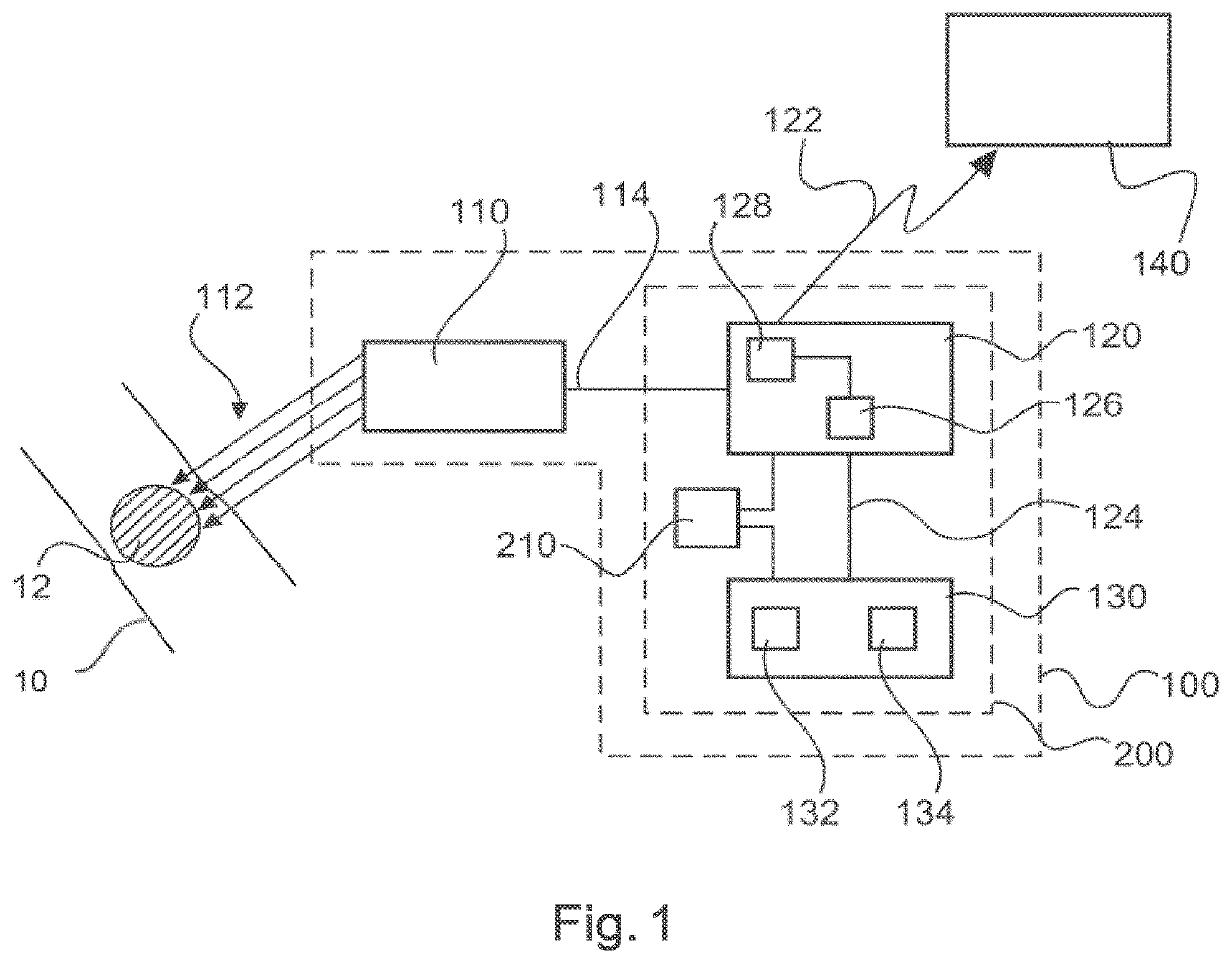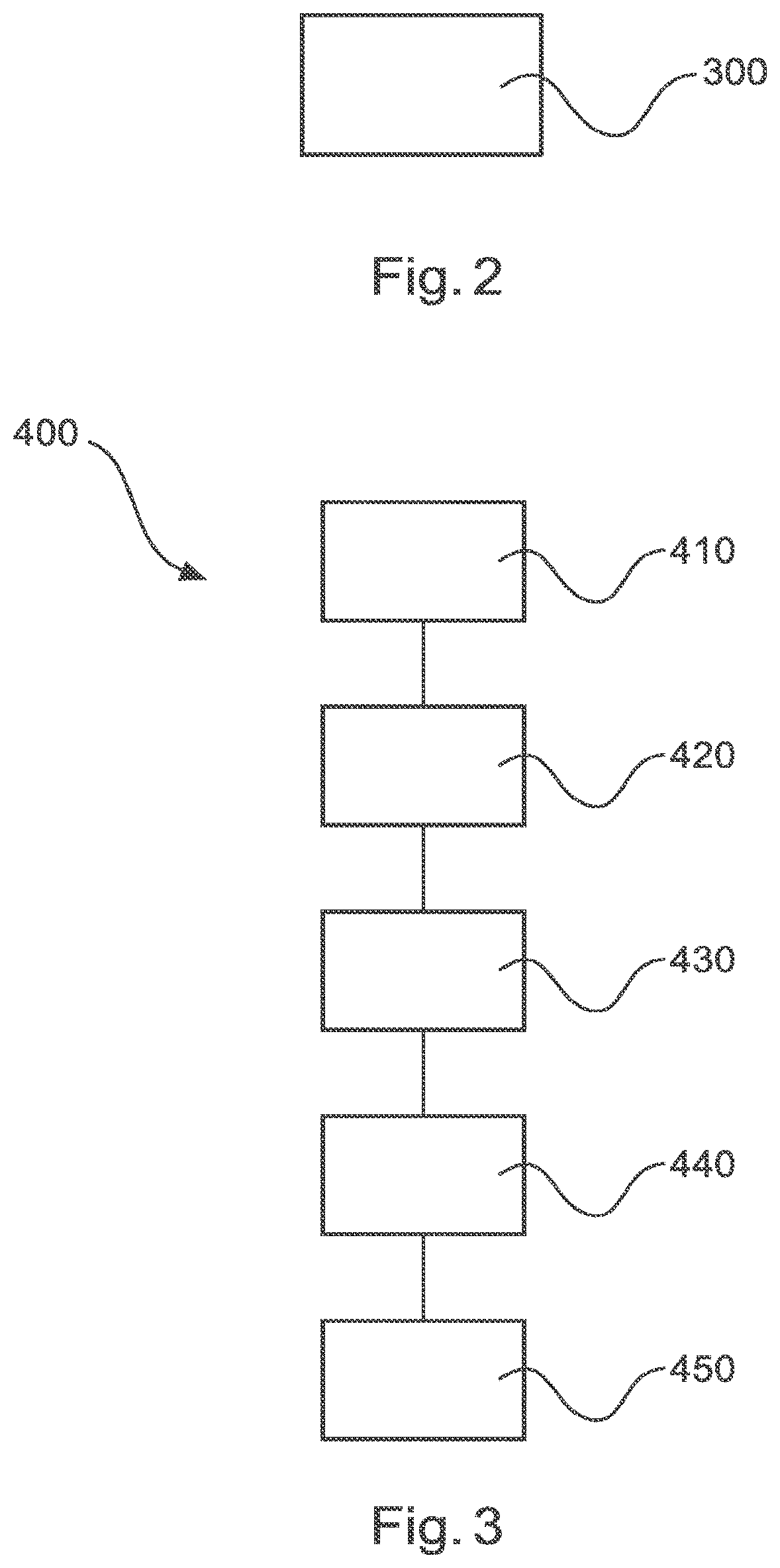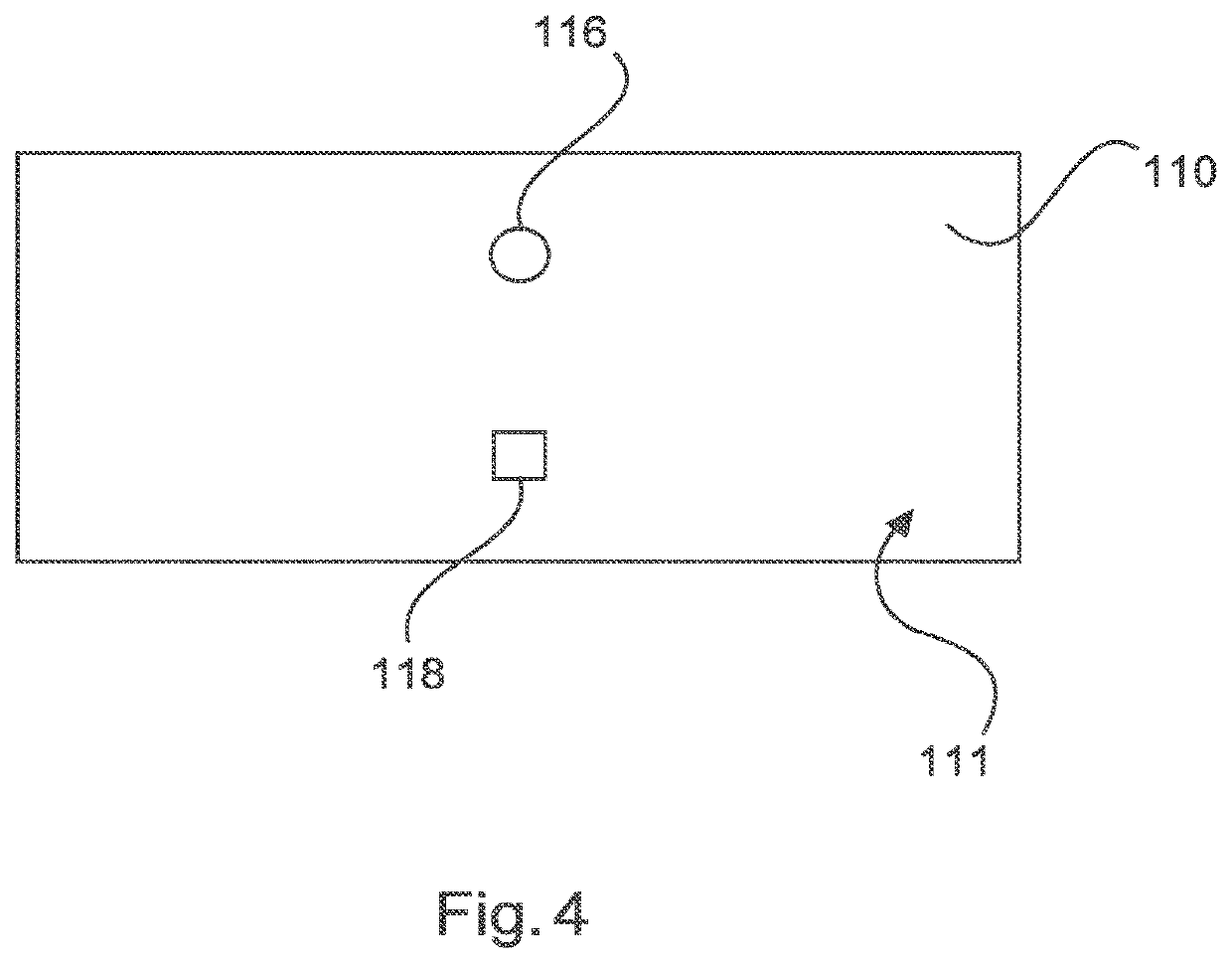Determination of a degree of elongation of hair using a nir sensor
a technology of nir sensor and hair, which is applied in the field of determining the degree of elongation of hair using a nir sensor, can solve the problems of severe damage to hair, hair damage due to chemical or physical processes or mechanical effects, and natural or artificial processes, so as to reduce the amount of memory required and facilitate the exchange effect of users
- Summary
- Abstract
- Description
- Claims
- Application Information
AI Technical Summary
Benefits of technology
Problems solved by technology
Method used
Image
Examples
Embodiment Construction
[0018]The following detailed description is merely exemplary in nature and is not intended to limit the disclosure or the application and uses of the subject matter as described herein. Furthermore, there is no intention to be bound by any theory presented in the preceding background or the following detailed description.
[0019]It can be regarded as the task of the present disclosure to simplify the determination of a degree of stretching of hair, especially about the expenditure of apparatus and time.
[0020]This task is solved with the characteristics of independent claims. Further developments of the present disclosure result from the dependent claims and from the following description.
[0021]The present disclosure is based, inter alia, on the following findings: It was recognized that the overstretching of hair (the degree of stretching) is a relevant cosmetic parameter and that this degree of stretching can be detected with very little effort using near infrared sensors. This allow...
PUM
| Property | Measurement | Unit |
|---|---|---|
| wavelength range | aaaaa | aaaaa |
| wavelength range | aaaaa | aaaaa |
| length | aaaaa | aaaaa |
Abstract
Description
Claims
Application Information
 Login to View More
Login to View More - R&D
- Intellectual Property
- Life Sciences
- Materials
- Tech Scout
- Unparalleled Data Quality
- Higher Quality Content
- 60% Fewer Hallucinations
Browse by: Latest US Patents, China's latest patents, Technical Efficacy Thesaurus, Application Domain, Technology Topic, Popular Technical Reports.
© 2025 PatSnap. All rights reserved.Legal|Privacy policy|Modern Slavery Act Transparency Statement|Sitemap|About US| Contact US: help@patsnap.com



